As in English, where there’s an expression, “in the middle of nowhere,” Chile has its version. A place of minimal interest, or where there is nothing going on, is often said to be “entre Tongoy y Los Vilos (between Tongoy and Los Vilos), two towns on the coast roughly north of Santiago and south of La Serena. I have friends that have camped in Los Vilos, and I have been to Tongoy, but what lies along the coast is mostly what people drive past, including Los Molles, a pretty beach town with a restaurant everyone raves about (El Pirata Suizo), and a little nature area (Puquén) that was blooming with pink chagualillofenvirs and fuchsia pato de guanaco, and loads of other flowers. High season is said to be mid October, though I’m sure it varies from year to year.
Los Molles is technically not between Los Vilos and Tongoy, but part of the trip, and in some senses, is in the middle of nowhere, though it’s close to the allegedly amazing and mythic Empanadas Huentelaquén, which are, you know, fried cheese empanadas, so how much you will love them is related to how much you love cheese empanadas in general. Me? not so much. Also, ran into friend’s father-in-law there. Unexpected, but such is Chile.
Anyway, the whole reason I was up in this area was to go further inland to a town that is in the proverbial middle of nowhere, called Combarbalá. I first found out about Combarbalá in a store in Los Dominicos in Santiago, where they sell little stone boxes and decorative items out of a stone called combarbalita, a marble-like stone with patterns of lavender, pink, brown and cream. The stone is lovely and smooth when worked, and every now and then I get a town stuck in my head that I want to visit, and here I had a willing accomplice, and so we drove north.
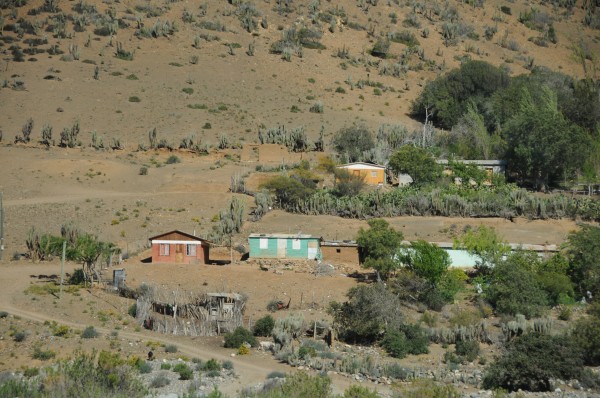
There is just so much emptiness, so much space. It’s amazing to me that humans could live in such vastly different environments, like in Pucón or Puerto Varas or Puerto Natales in the south, and where I was recently, or Santiago (where I usually am), all within one country.
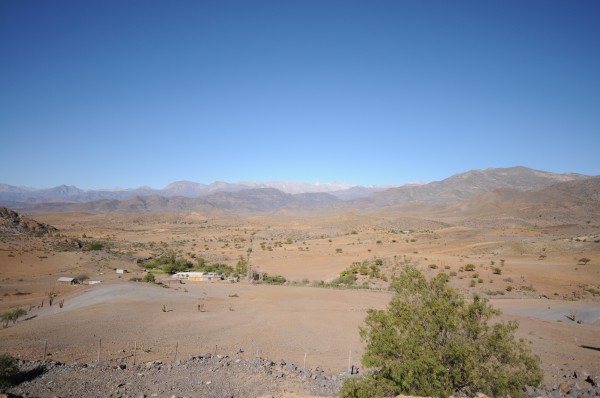
The town of Combarbalá is fairly small (urban population about 5500), and seems like a nice place to live, people reasonably friendly, lots of stone detail, including in the central plaza which also has free wifi. And a few stores selling mortars and pestles (unpurchased by me), and jewelry and trays and bowls and such. Also, a big yellow church.
And the winner of the buildings-I-love competition for this trip, with an unfair advantage based in being painted colors I like, creative font on the sign, abbreviation, awesome combination of items (sweets and birthday party supplies), pretty door, multiple colors, zinc roof and diagonal shadow. There really was no contest, actually.
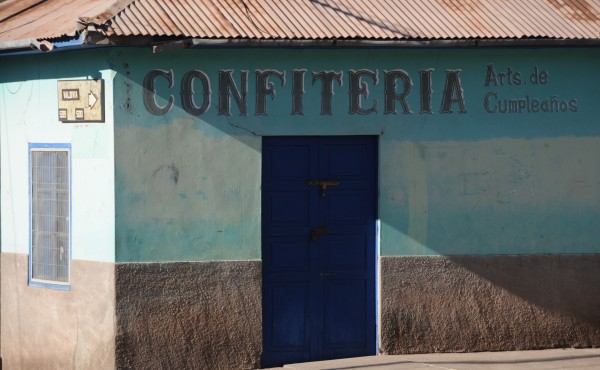
While we (M and I) were shopping on one of the combarbalita stores, a flyer caught my eye. Observatory. To be fair, if I’d done any research at all, I would have known that it was there. See: the story about the Last Supper in Milan and how I failed to see it because I did not know it was there, the planning is not strong with this one. The sky in the north of Chile was not “perfect” on this date as it was close to the full moon, but we waited until it was good and dark (9 PM, and then) trundled out to the Cruz del Sur observatory and their 14-inch telescope. As soon as we got there, the guide told us that normally they do movie, telescope and then talk, but he wanted us to stop in and peep through the telescope first (and then again later), because Mars was just about to drop behind the horizon. We got to see Saturn (hello, rings!) at this time as well. It was only the two of us, so we got as much telescope time as we wanted
I had a fight with my tripod here, but a couple of night shots never hurt anyone, blur be semi-darned.
We also saw two stars that rotate around a point, and that are orange and blue, the surface of the moon, and many constellations, including one that is meant to look like a teapot (hello, English influence!), and of course, the Southern Cross. I also found out that in Australia, the Big Dipper is called the Saucepan, pronounced sauce-pin.
The day after the observatory visit and after some punitively-priced coffee, because this is what happens when you want foreign comforts in mining towns re: pricing. We went into a small mine, the name of which is not depicted on the following sign. That mine is closer to the enclave of Los Rulos, though how anyone’s hair could stay curly in that dry windy heat, I have no idea. Certainly it must refer to something else. m, generally speaking you can’t just go into a small mine (though you can visit El Teniente and Chuquicamata, and I should write about this someday), but we know a guy who knows a guy. And guy number two (got that) explained to us that women were not traditionally allowed into mines, since mines are named with female names, and as such would get jealous of the presence of women. Oh sexism, we barely missed you! Also, on the pop etymology of why the word mina is used in Chile to mean a mine and also a woman, because they are “ricas” (where that means rich in minerals, or beautiful/delicious). Worry not, men are also called minos, and I am sure this does not fix anything, but it will impress your Chilean hosts if you know it.
Moving right along.
Mines are dark and rocky, occasionally wet, and sometimes have large vehicles driving into them. You should get out of the way. We did.
See, women’s name. We did not go into this mine.
And this is what a living fence looks like when you live in a place where it’s pretty much cacti everywhere you go. In foreground and the ridges behind, all made of cactus.
So the answer to the question Combarbalá yes or no? I say yes. There are also some petroglyphs and an archaeological route nearby, as well as solar panels, many, many goats (and goat cheese) and great photogenicness. As usual, this trip makes me think of taking off and tooling around more rural, only semi-touristed (mostly by Chileans) Chile someday. There is so much more to this place than Santiago. And if I seem to have a preference for the south, well, I do. But little by little the north is creeping into my subconscious. Even if the arid air and the desert sun are trying to shrivel me into a human-sized raisin. Sunscreen not optional.
Anyone got another small town they want me to visit? Up in this area, if I’d had more time, I’d have checked out Monte Patria, where it turns out a friend’s grandmother is from. Because if you ask around enough, nearly everyone has an interesting, non-Santiago place their people are from. True story: I kind of want to visit them all. Especially the ones where they make pretty things. And yes I know, I have not included a photo of anything made of combarbalita. I will try to remedy this or you know, google.
Also, thanks to LM who pointed out that I had the expression worded the wrong way around!

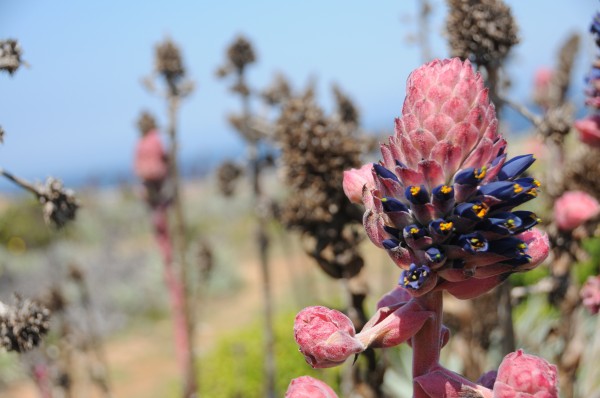

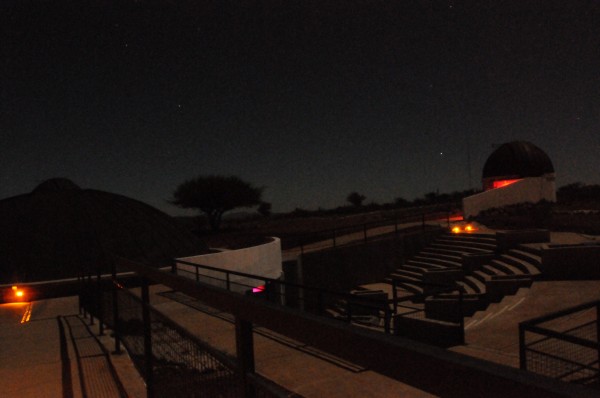
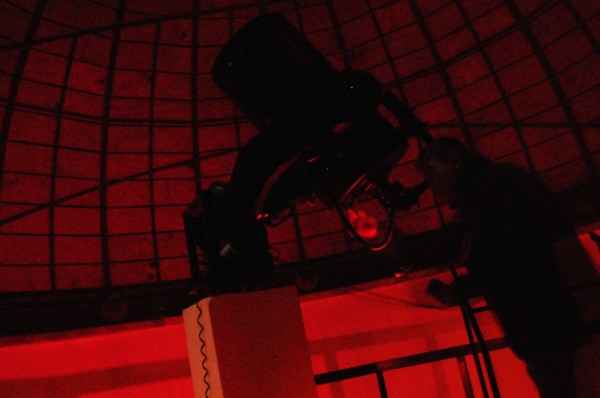
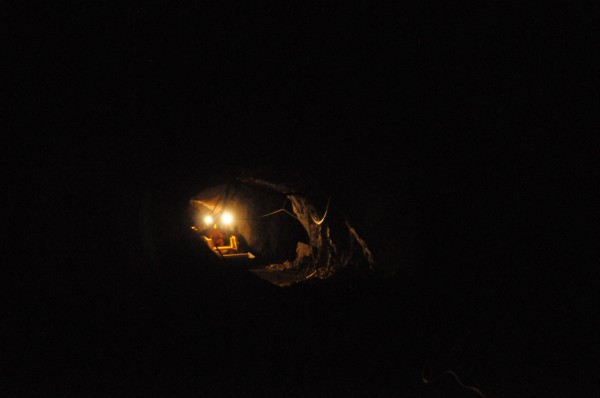
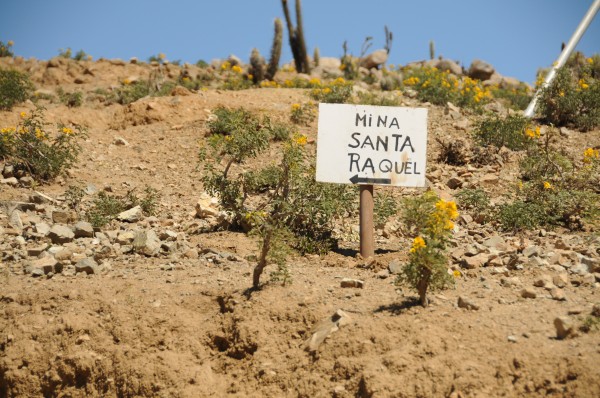
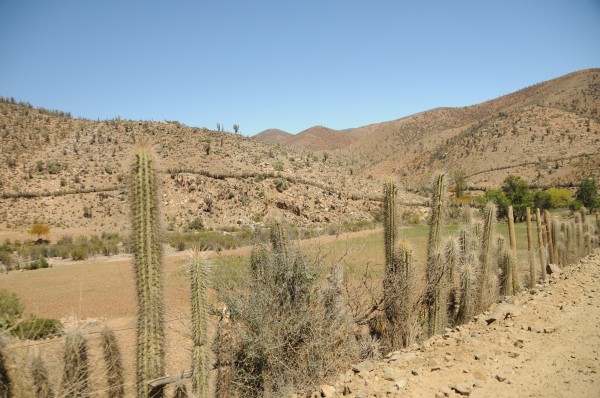
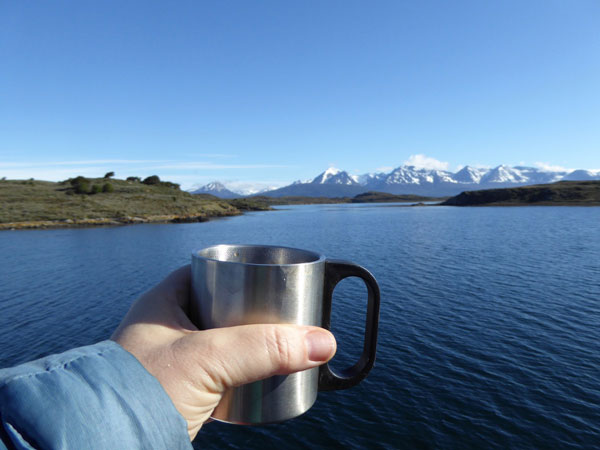
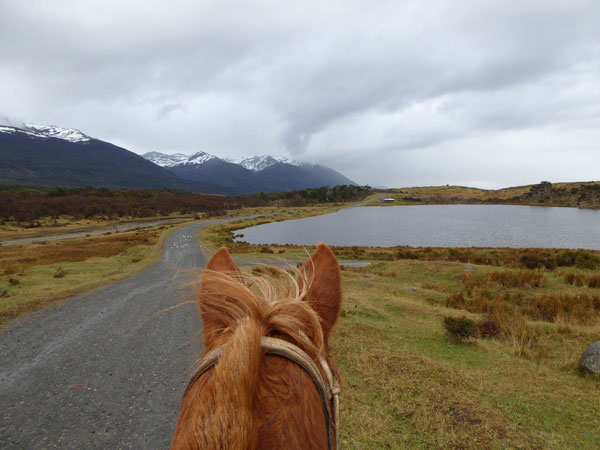


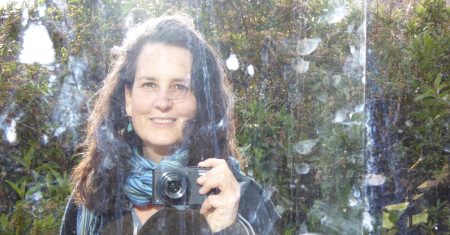
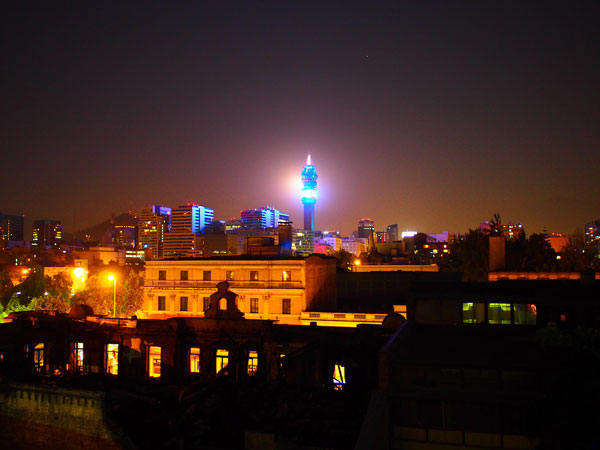
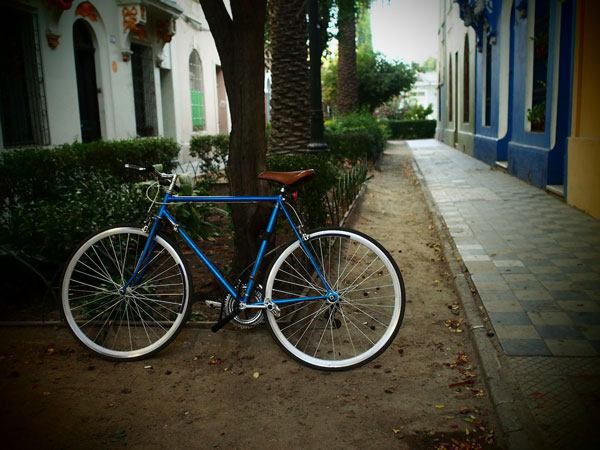


We’ve been (sister + me) in “Comba” like… 3 or 4 times, years ago, years before the observatory was built (we camped there too… on that hill, we found the only one spot w/phone signal).
Never thought I would find great ice cream and sherbets there!! (Comercio St)
I especially remember those helados (cinnamon, arroz con leche), and those boring hours after lunch, where everyone seems to be hiding from sunlight, or as we called it: “siesta time”.
Love your expression “hiding from sunlight.” That’s me. I’d base my day around dawn and dusk if it were up to me. It sure is bright up there! I can’t wait to get out there and go to some more smallish towns in Chile! Any suggestions? Also, why have you been there so many times?
Good to hear about these places. I have zoomed along the road from Santiago to La Serena by bus a couple of times but never even heard of any of these places.
same here! Los Molles is on the coast, so you’d have passed by it, but you pretty much have to try to go to Combarbalá, you’d never end up there by accident!
Have you ever been to Pica? Famous for their small lemons. They also have a hot water spring where you can take a bath. We also bought cheap smoothies made out of different kind of fruits.
It’s in the inland of the Atacama. We took a bus there from Iquique (which we also enjoyed, lots of surfers). Maybe something to ad to your list.
I haven’t! I was in Iquique for a while, but in the end didn’t make it to Pica. But I will definitely put it on my list. I love all the various things in Chile that come from specific places!
I hope you will like it, if you get the chance to go there. There was a kind of big natural pool and two small caves you could swim into. I remember putting my feets down and feeling them disappear into holes (where water was pouring out).
I’m fond of Pomaire, though it’s very crowded. But I can’t resist all the pots and clay items. It’s fun to find things thats actually made there and then.
I love combarbala! We used to drive there when I was a kid with my parents (my mom makes mosaics on her spare time and we used to go there to get stones).
Nowadays they have a pretty decent road up there, about 15 years ago it was an adventure to get there because the road was not a road but a trail for the goats and other animals.
Other places you might want to visit include Andacollo (not sure if you’ve been there), quebrada alvarado y quebrada escobares (both on the way from viña to olmue), pica (as mentioned before), rengo (i think you’ve been there), maitencillo and in general roads that starts in cities and head for the mountains. It is amazing how many beautiful towns are forgotten in”el interior” 🙂
I have been to Andacollo, and really enjoyed it. A man insisted on giving us rocks when we were there. He came up to my friend and said to him, ” I see you and your two lady friends are not from here, take these rocks,” and drank the most refreshing mote con huesillo of my life. I have not been to either of those quebradas you’ve just mentioned. Rengo I haven’t been to, does Rengue count? There are so many lovely towns in the interior, you said it! The road to Combarbalá is excellent nowadays, though the road to the tiny town of El Rulo is still a bit more goat than car-friendly!
No idea where Rengue is or what it looks like so I cannot give you a free pass :-p
Another town that is beautiful is Putre near lake chungara. But is high up in the mountains (4000 meters over sea level). There are several towns there that are also worth visiting, mostly because they haven’t changed that much in the past 400 years.
I realized that I’m being very unfair with coastal towns. There are lots of beautiful coastal towns all over Chile too. Quintay is one of my favorites, but there is plenty to choose from
Putre is on my list, though I am not great at high altitude traveling. I am very interested in seeing lots of parts of Chile that are not necessarily on the tourist track, but everyone I write for wants me to go to the same five places (which I know you know what they are!). Still going to check them out though. 🙂
oh, and next up on the list: monte patria!
Well… time flies, I should say 25 years ago… Although the last time I as there with the old road was about 15 years ago.
My Mother uses that, entre Tongoy y Los Vilos, or also “donde el Diablo perdió el poncho”.
But more importantly, don’t you love the names of these places? Like Combarbalá? There is an extremely beautiful song by Violeta Parra, called La Exiliada del Sur that has all these such beautiful names of from (I imagine, since I’m not an expert on my country’s geography) the south of Chile.
Look the song up. The lyrics are really something remarkable.